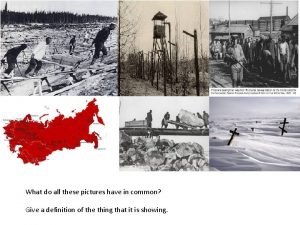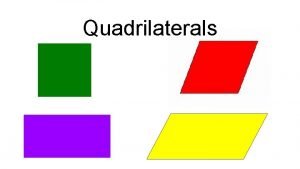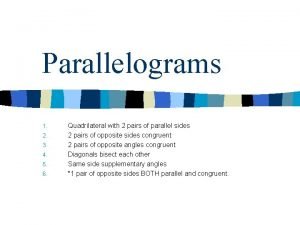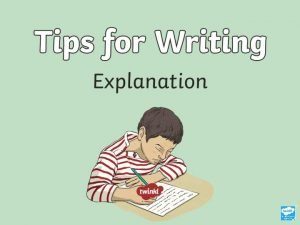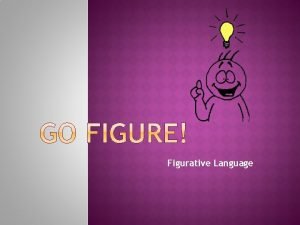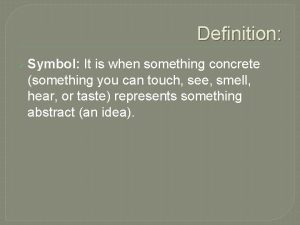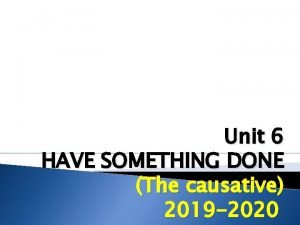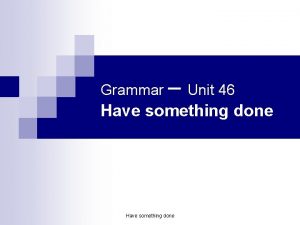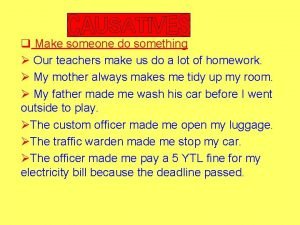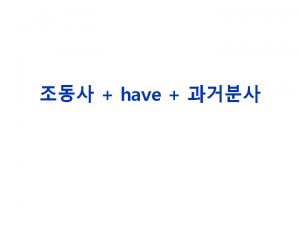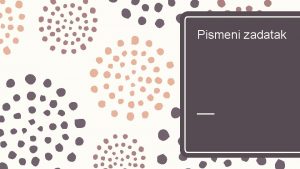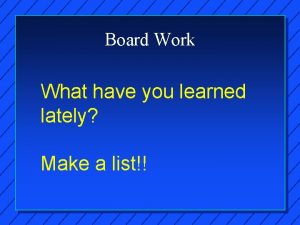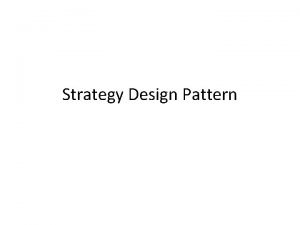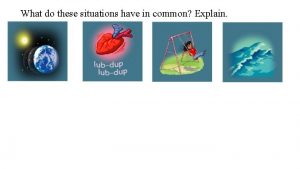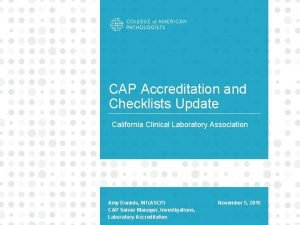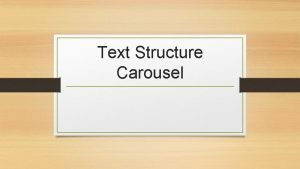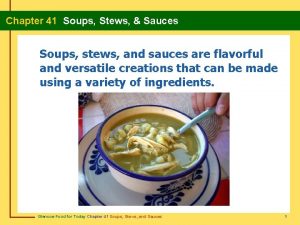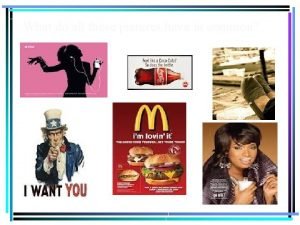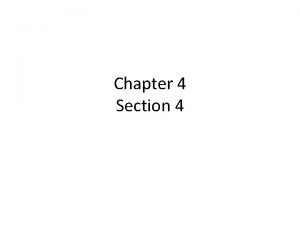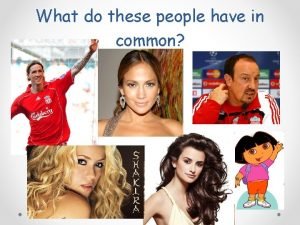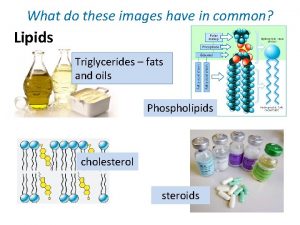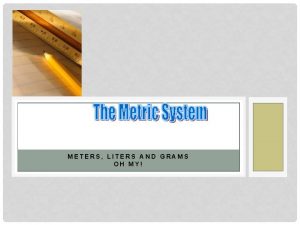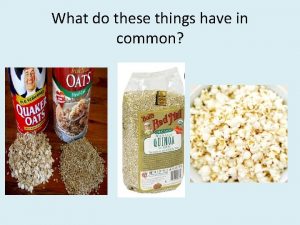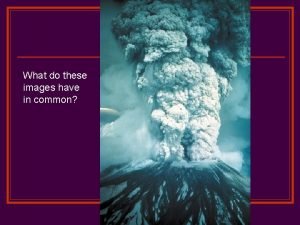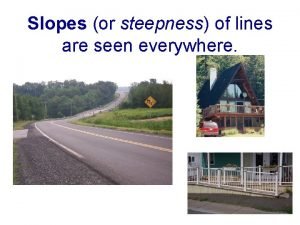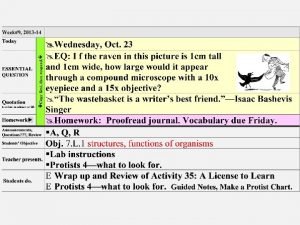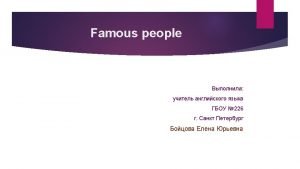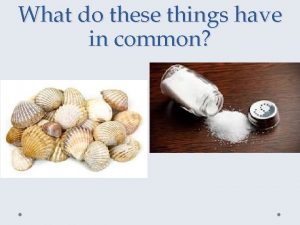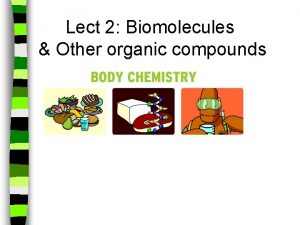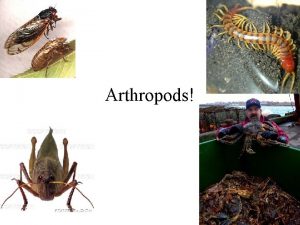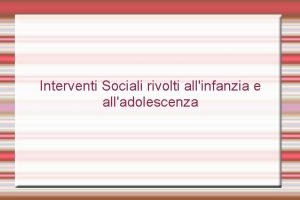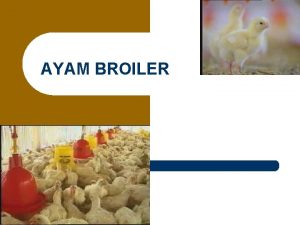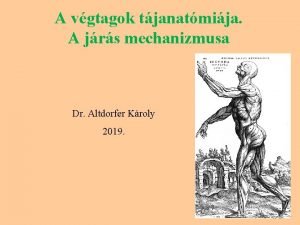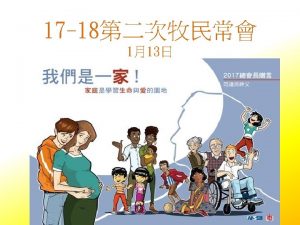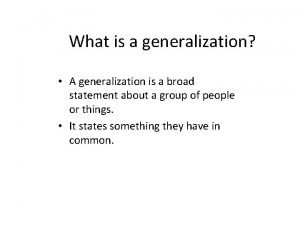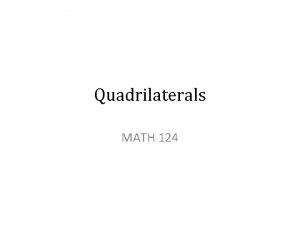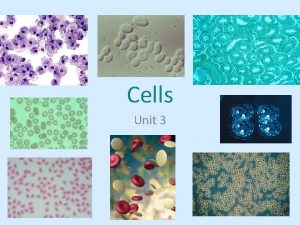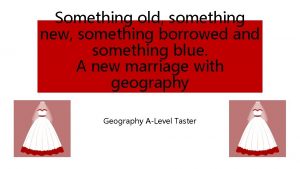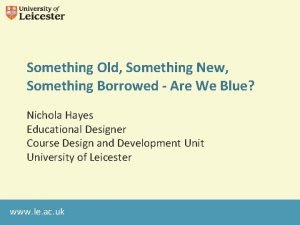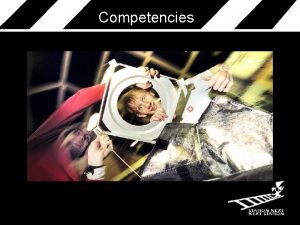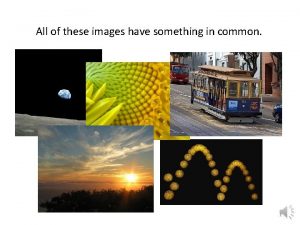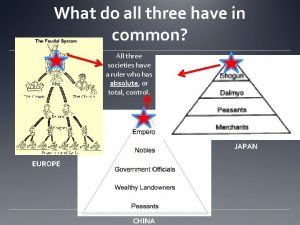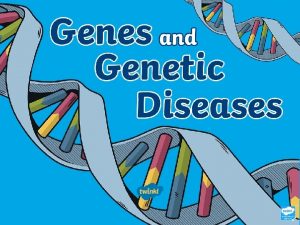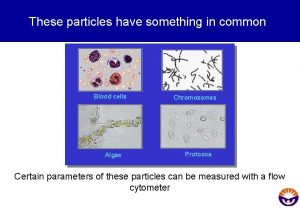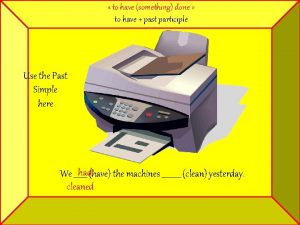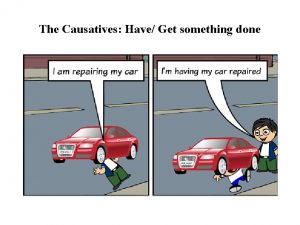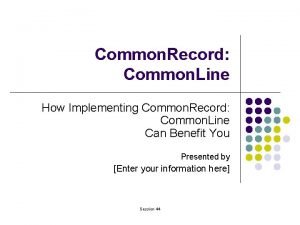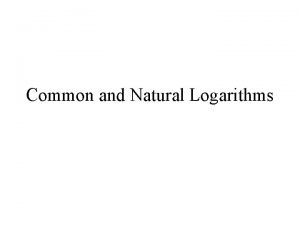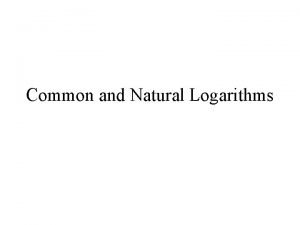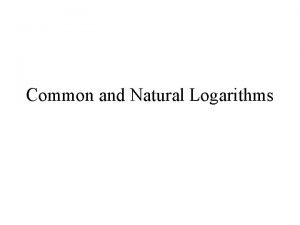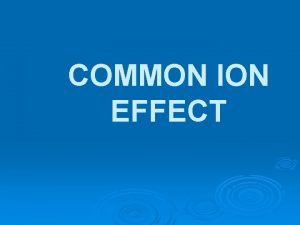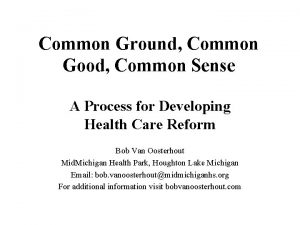We all have something in common Something we


















































































- Slides: 82

We all have something in common…

Something we are doing right now…

? What am I talking about?

Reading…


Clinical Question In children, does the use of pictures support literacy development? In children with developmental disabilities, does the use of pictures support learning to read new words?


a) cat b) cat c) cat


1 2


Results of Search Level of Evidence # Level I Systematic review 0 Level I Randomised control trials 0 Level III 0 Level IV 8 Sources ERIC Pubmed OVID CINAHL Web of Science

Fading Study Dorry and Zeaman 1975

Condition 1 Picture and word presented Picture gradually faded

car

Condition 2 Picture and word OR Word alone

car

OR

car

Condition 3 Picture and word presented

car

Condition 4 Picture alone OR Word alone


OR

car

Summary Dorry and Zeaman (1975) • • Printed word and picture. Picture gradually faded Either word and picture OR word alone Printed word and picture Picture alone or word alone


Fading Study Tabe and Jackson 1989

Condition 1 Word embedded in picture (superimposed) Picture gradually faded

car

Condition 2 Word embedded in picture (superimposed) Picture non-fading

car

Condition 3 Picture with word written on the side (juxtaposed) Picture gradually faded

car

Condition 4 Picture with word written on the side (juxtaposed) Picture non-fading

car

Summary Tabe and Jackson (1989) • • Superimposed fading Superimposed non-fading Juxtaposition non-fading


Picture vs. Word Study Singh and Solman 1990

Condition A Picture + Picture enhanced


5 cm 2. 5 cm car

Condition B Word alone

2. 5 cm car

Condition C Word alone + Word enhanced

car

5 cm car 2. 5 cm

Condition D Word alone

5 cm car

Summary Singh and Solman (1990) • • Picture (1 st slide) and picture enhanced (2 nd slide) Word alone Word (1 st slide) and word enhanced (2 nd slide) Word alone enhanced


Didden, Prinsen and Sigafoos 2000

Condition A - D Same as Singh and Solman (1990)

Condition E New condition Word alone and then…

car

2 seconds later

car

Summary Didden, Prinsen and Sigafoos (2000) • • • Picture (1 st slide) and picture enhanced (2 nd slide) Word alone Word (1 st slide) and word enhanced (2 nd slide) Word alone enhanced Word alone then picture feedback


Didden, de Graaff, Nelemans, Vooren and Lancioni 2006

Condition 1 Word alone

car

Condition 2 Word embedded in picture

car

Condition 3 Faded with 4 steps

car

Summary Didden, de Gradd, Nelemans, Vooren and Lancioni (2006) • Word alone • Word embedded in picture • Word and picture. Picture faded


Summary for Fading Studies • Dorry and Zeaman 1975 Printed word and picture. Picture gradually faded. • Hoogeveen, Smeets and Lancioni 1989 Fading pictorial elements. • Tabe and Jackson 1989 Fading conditions (superimposed/juxtaposed)

Summary for Picture vs Word • Singh and Solman 1990 Word alone enhanced • Didden, Prinsen and Sigafoos 2000 Word alone then picture feedback • Didden, de Gradd, Nelemans, Vooren and Lancioni 2006 Word alone • Fossett and Mirenda 2006 Picture to text matching


Another interesting find…

차 Car.

집 A table and a bed next to a wall Furniture in a room. House.

Let’s try with Sight Words car

Make a handle… Cars go beep

What would this LOOK like? car

car


Clinical Question In children does the use of pictures support literacy development? No, presenting the WORD ALONE (i. e. without pictures) is more efficient when teaching children to read new words

a) cat b) cat c) cat

How might this effect clinical practice? - Advice to teachers - Information given to parents - Challenge current strategies used in the classroom and clinical practice
 What are the things common to these pictures
What are the things common to these pictures What do all waves have in common
What do all waves have in common Symbol definition
Symbol definition What do all religions have in common
What do all religions have in common What do all quadrilaterals have in common
What do all quadrilaterals have in common What do all connective tissues have in common
What do all connective tissues have in common What does a rhombus have
What does a rhombus have What do the 4 outer planets have in common
What do the 4 outer planets have in common Name all rays
Name all rays 12 edges and 6 faces.
12 edges and 6 faces. What does candy's dog symbolize
What does candy's dog symbolize How something works
How something works Smart is not something you are
Smart is not something you are Literal vs figurative language worksheet
Literal vs figurative language worksheet Something concrete that represents something abstract
Something concrete that represents something abstract Symbol/symbolism definition
Symbol/symbolism definition Something old something new poem
Something old something new poem Something that describes something
Something that describes something What is the greatest common factor of 18, 36, and 90?
What is the greatest common factor of 18, 36, and 90? Common anode and common cathode
Common anode and common cathode Factors of 60 and 72
Factors of 60 and 72 Highest common factors and lowest common multiples
Highest common factors and lowest common multiples Gcf of 72 and 90
Gcf of 72 and 90 Multiples of 9 and 21
Multiples of 9 and 21 The passive have something done unit 6
The passive have something done unit 6 Unit 46 have something done
Unit 46 have something done Have someone do something exercises
Have someone do something exercises 간접의문문 만들기
간접의문문 만들기 Have you ever done something dangerous
Have you ever done something dangerous Have you ever thought about inventing something
Have you ever thought about inventing something I am sure you have heard something like
I am sure you have heard something like What is something you have learned lately
What is something you have learned lately Contrast gymnosperms and angiosperms
Contrast gymnosperms and angiosperms Use a common backbone to connect all devices
Use a common backbone to connect all devices Strategy declares an interface common to all
Strategy declares an interface common to all What do you do have in common explain
What do you do have in common explain Cap all common checklist 2020
Cap all common checklist 2020 What do these pictures have in common?
What do these pictures have in common? What common belief did all progressives share?
What common belief did all progressives share? All plant fibers share the common polymer that is
All plant fibers share the common polymer that is Being a clown isn't all fun and games summary
Being a clown isn't all fun and games summary What do soups stews and sauces have in common
What do soups stews and sauces have in common Propaganda techniques images
Propaganda techniques images What does jupiter have in common with neptune brainpop
What does jupiter have in common with neptune brainpop What do a butterfly and metamorphic rock have in common
What do a butterfly and metamorphic rock have in common What do these people have in common?
What do these people have in common? What do these images have in common
What do these images have in common Decir yo form
Decir yo form What do these pictures have in common
What do these pictures have in common A common flea is recorded to have jumped
A common flea is recorded to have jumped Meters liters and grams chart
Meters liters and grams chart Psychoanalytic vs humanistic
Psychoanalytic vs humanistic What do these pictures have in common
What do these pictures have in common What do these people have in common
What do these people have in common Grain kernal
Grain kernal What do these images have in common
What do these images have in common Which principle
Which principle Five outer planets
Five outer planets What makes lines perpendicular
What makes lines perpendicular Amoeba paramecium euglena
Amoeba paramecium euglena Who is he
Who is he What do these 3 things have in common questions
What do these 3 things have in common questions What did george calvert and william penn have in common
What did george calvert and william penn have in common Brainpop fats quiz answers
Brainpop fats quiz answers How do arthropods move
How do arthropods move Love all serve all help ever hurt never meaning in hindi
Love all serve all help ever hurt never meaning in hindi Interventi sociali rivolti all'infanzia e all'adolescenza
Interventi sociali rivolti all'infanzia e all'adolescenza Crucified laid behind a stone
Crucified laid behind a stone I work all night i work all day
I work all night i work all day Communication operations
Communication operations Sistem all in all out
Sistem all in all out Mesothenar
Mesothenar Silent night holy night all is calm all is bright
Silent night holy night all is calm all is bright Jesus lamb of god worthy is your name
Jesus lamb of god worthy is your name All of you is more than enough for all of me
All of you is more than enough for all of me She's all states and all princes i
She's all states and all princes i No power of hell
No power of hell Above all powers above all kings
Above all powers above all kings What is a generalization?
What is a generalization? Do all quadrilaterals have four sides
Do all quadrilaterals have four sides Only when all the rivers have run dry
Only when all the rivers have run dry Living things life processes
Living things life processes Cell transport
Cell transport
